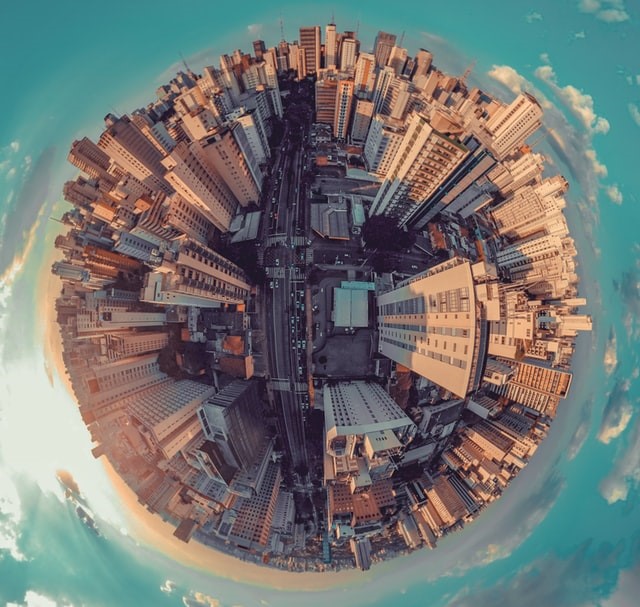HOW CAN 360 CAMERAS BE USED IN CONSTRUCTION?
Cut down the time required to capture construction site progress in half with an effective 360 camera workflow. Instead of manually capturing site progress in 2D, you can quickly create a virtual environment that project stakeholders literally “walk-through”. Clients can then add 360 captures to their documentation to seek progress payments.
For the group of people mentioned above, one of the most important qualities of a 360 Camera is the quality of the images and video produced. A high-resolution capture can have the potential to impress even the most skeptical of clients.
Combined with a VR headset like the Oculus VR, anyone could potentially create a compelling environment in virtual reality for users to interact with.
WHAT ARE THE CHALLENGES OF WORKING WITH 360 CAMERAS?
If it’s so great, why aren’t more firms using it? The simple answer is that the construction industry has not caught on to the technology yet. Traditionally, the construction industry has relied on 3D Laser Scanners in their construction workflows. There scanners can cost upwards of SGD$23,800. There are also costs related to the maintenace and operations of such cameras (such as having trained staff on hand to operate these cameras).
The cost of using such technology might have been quite prohibitive to small-scale contractors to adopt. Therefore, they either rent the technology or choose to forgo it altogether.
The cost of purchasing and maintaining the hardware is one thing – actually capturing usable information on the field is a whole other beast. Some of the problems include:
Additional light sources and equipment that helps disperse light would be useful in capturing darker spots on-site.
A 360 camera can be mounted on a monopod. When positioned incorrectly, a tripod set-up may be mistakenly captured in the 360 capture.
Project progress documentation would only be useful if pictures of the site are consistently obtained from a fixed location.
360 captures can take up a large amount of space. A cost-effective storage solution must be used so that the captured information can be referenced at a later date.
360 CAMERAS VS LASER SCANNERS
Laser scanners equipped with LIDAR are typically more expensive but are able to capture more detailed information using point clouds. With a Laser Scanner, the distance between objects can be accurately captured and imported into CAD software like Revit. The Mesh Objects created by 360 cameras are too inaccurate to be of any use in a professional CAD modelling environment, with massive distortions evident owing to the way the camera is built.
Typically, the Laser Scanner would be targetted at the professional market where accuracy is key.
On the other hand, the 360 Camera is targeted at the consumer crowd – with the objective of creating immersive virtual environments. However, an increasing number of professionals are beginning to adopt the use of 360 cameras into their own workflow due to its cost effectiveness.
360 CAMERA USE IN SINGAPORE IS STILL LIMITED
As of today, there are not many providers in Singapore providing fully-packaged solutions for 360 videos that specialise in the construction sector. For vendors who would like to get connected with AcePLP’s network of clients to offer their services, feel free to reach out to us.


i am interested to know more on the 360 camera
555
555
555
555
555
555
pOWWtxFJ
1*555
-1 OR 3+660-660-1=0+0+0+1
if(now()=sysdate(),sleep(15),0)
(select(0)from(select(sleep(15)))v)/*’+(select(0)from(select(sleep(15)))v)+'”+(select(0)from(select(sleep(15)))v)+”*/
1 waitfor delay ‘0:0:15’ —
-5) OR 35=(SELECT 35 FROM PG_SLEEP(15))–
sFZLnguv’) OR 943=(SELECT 943 FROM PG_SLEEP(15))–
1′”
555